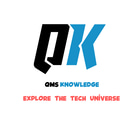A Comprehensive Guide to Different Types of Welding Processes
WELDING
3/5/20243 min read


Introduction
Welding is a critical process in various industries, allowing the joining of metal parts to create strong and durable structures. However, not all welding processes are the same. Different methods of heat generation and techniques are used, each with its advantages and applications. In this article, we will explore the various types of welding processes and their key characteristics.
MIG Welding
TIG Welding
Shielded Metal Arc Welding
Flux Cored Arc Welding
Plasma Arc Welding
Electron Beam Welding
Laser Beam Welding
Oxy-Fuel welding
Atomic Hydrogen Welding
Electroslag Welding
1. MIG Welding
Metal Inert Gas (MIG) welding, also known as Gas Metal Arc Welding (GMAW), is a popular welding process that uses a consumable wire electrode and a shielding gas to create an electric arc between the electrode and the workpiece. The heat generated melts the wire electrode and the base metal, creating a strong bond. MIG welding is versatile and can be used on a wide range of materials, making it suitable for both industrial and DIY applications.
2. TIG Welding
Tungsten Inert Gas (TIG) welding, also known as Gas Tungsten Arc Welding (GTAW), is a precise and high-quality welding process. It uses a non-consumable tungsten electrode and a separate filler material, if necessary. The welding area is protected by an inert gas, usually argon. TIG welding is commonly used for critical applications where aesthetics, precision, and weld quality are paramount, such as aerospace, automotive, and art industries.
3. Stick Welding
Shielded Metal Arc Welding (SMAW), commonly known as Stick welding, is one of the oldest and simplest welding processes. It uses a consumable electrode coated with flux, which provides a protective shield and produces a slag during the welding process. Stick welding is versatile and can be used on various materials, making it suitable for outdoor and remote applications. It is commonly used in construction, maintenance, and repair work.
4. Flux Cord Arc Welding
Flux Cored Arc Welding (FCAW) is similar to MIG welding, but instead of a solid wire electrode, it uses a tubular wire filled with flux. The flux provides a shielding gas and creates a slag, which helps protect the weld from atmospheric contamination. FCAW is commonly used in heavy fabrication, construction, and shipbuilding industries, where high deposition rates and deep penetration are required.
5. Plasma Arc Welding
Plasma Arc Welding (PAW) is an advanced welding process that uses a focused plasma arc to join metal parts. The plasma is created by passing a gas, such as argon or nitrogen, through a small orifice and applying a high-frequency electric arc. PAW offers precise control, and high-quality welds, and can be used on a wide range of materials. It is commonly used in aerospace, electronics, and automotive industries.
6. Electron Beam Welding
Electron Beam Welding (EBW) is a fusion welding process that uses a high-velocity electron beam to join metal parts. The beam is generated by accelerating electrons in a vacuum chamber and directing them towards the workpiece. EBW offers deep penetration, minimal distortion, and precise control over the heat input. It is commonly used in aerospace, medical, and semiconductor industries, where high-quality welds are required.
7. Laser Beam Welding
Laser Beam Welding (LBW) is a precise and efficient welding process that uses a highly focused laser beam to join metal parts. The laser beam melts the workpiece, creating a weld pool that solidifies to form a strong bond. LBW offers high welding speeds, narrow heat-affected zones, and excellent weld quality. It is commonly used in the automotive, electronics, and jewelry industries.
8. Gas Welding
Gas welding, also known as Oxy-Fuel welding, is a process that uses a flame produced by the combustion of a fuel gas, such as acetylene, and oxygen. The heat generated melts the workpiece, and a filler rod is used to create a weld joint. Gas welding is versatile and can be used on various materials, making it suitable for both industrial and artistic applications.
9. Atomic Hydrogen Welding
Atomic Hydrogen Welding (AHW) is a welding process that uses hydrogen gas as a shielding gas and a filler material. The heat generated by an electric arc between two tungsten electrodes dissociates the hydrogen molecules into atomic hydrogen, which combines with any oxygen, nitrogen, or other impurities in the weld area. AHW offers deep penetration and is commonly used for welding high-strength steels and non-ferrous metals.
10. Electroslag Welding
Electroslag Welding (ESW) is a welding process that uses a consumable electrode and a flux to create a molten slag pool. The heat generated by an electric current melts the electrode and the base metal, creating a weld joint. ESW is commonly used for welding thick sections of steel, such as in shipbuilding, bridge construction, and pressure vessel fabrication.
Conclusion
Welding is a diverse field with various processes suited for different applications. Understanding the different types of welding processes and their characteristics is essential for selecting the right method for a specific project. Whether it's MIG welding for versatility, TIG welding for precision, or any other process for specific requirements, each method plays a crucial role in the fabrication and construction industries.
